INTRODUCTION
Polkadot network was created in 2016 by Dr. Gavin Wood, a co-founder of Ethereum. Wood worked as a research scientist prior to developing Ethereum and as the first chief technology officer at Ethereum .He left Ethereum 2016 to build his own project known as Polkadot today. Wood proposed and helped develop Solidity, an object oriented programming language for writing smart contracts and released the Yellow Paper defining the Ethereum Virtual Machine, the runtime system for Smart contracts in Ethereum, in 2014.
Wood views Polkadot as a multiple form of shortcut,he said ‘what Polkadot does is it allows you to shortcut on an awful lot of work that you have to do to build your own blockchain.It also allows you to shortcut on things like building your own community,it allows you to shortcut on stuff like being able to utilize all of the various bits that are going on in other blockchains.It does this by connecting other chains.It also very crucially allow you to avoid having to build your own security base.’

GAVIN WOOD (Creator of Polkadot)
Other co-founders are Thiel Fellow,Robert Habermeier and Peter Czaban. The project is being run and developed by the Switzerland-based Web3
Foundation.Web3 refers to the next-generation Internet, where decentralised platforms give users control over their privacy and personal data rather than large corporations.It aims to facilitate a fully decentralised web.
GENERAL OVERVIEW OF POLKADOT NETWORK
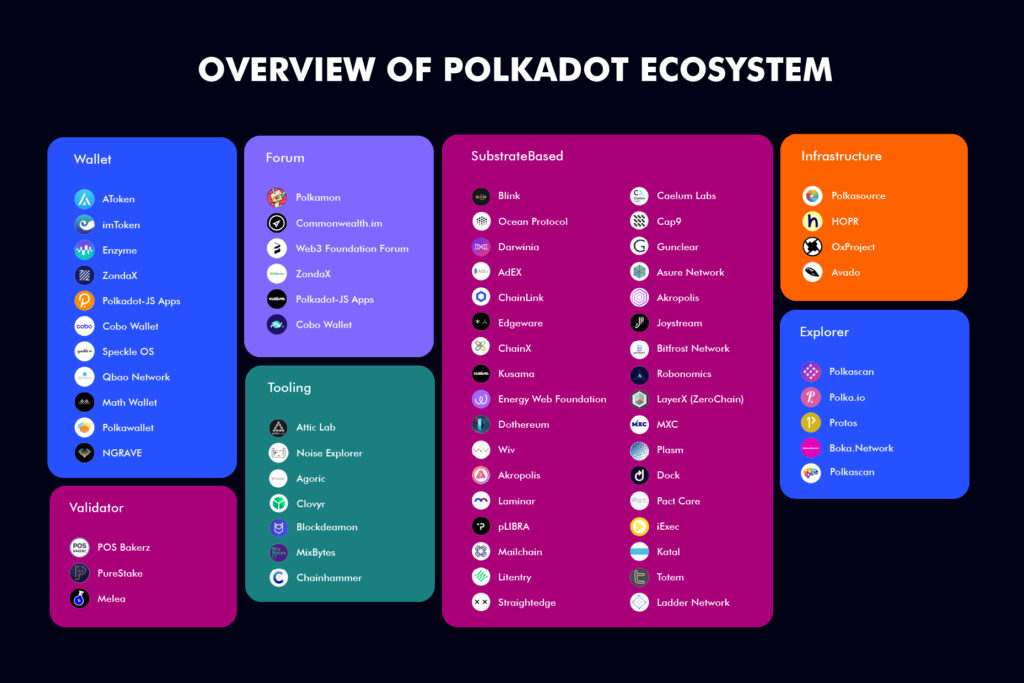
The Polkadot network can be referred to as a ‘multi-chain network’ that connect different specialized blockchains into a single unified network.It allows other network to build their own blockchain on Polkadot using something called Substrate.The Substrate blockchain building framework that is derived from Parity’s experience with Bitcoin, Ethereum and enterprise blockchains.
Polkadot is a network designed to join the dots with all other networks. It’s commonly referred to as a multi-chain network, because it can join networks together, unlike networks like Bitcoin, which operates on its own.
Polkadot is a software that seeks to incentivize a global network of computers to operate a blockchain on top of which users can launch and operate their own blockchains.
The protocol’s state machine is compiled with WebAssembly (WASM) — a high performance virtual environment. It is coded with Golang, C++and Rust for wide developer accessibility.
This solves issues on congestion which can cause high gas fees.It enables startups, software enterprises and developers to make efficient use of the blockchain technology in the precise way it is best for their project.
TECHNOLOGY OF POLKADOT
Some concepts are to be familiarize to understand the Polkadot structure and these are:
Relay Chain:The base Polkadot chain is the relay chain or multi-chin that connects all other individual chains and by so doing they can originally solve interoperability issues between these connecting chains
Parachain: These are the parallelised chains that run through the Polkadot. network and helps to scale up the system by its parallelising operations
Bridge Chain: This chain connects different blockchains that don’t use Polkadot’s governance protocols.
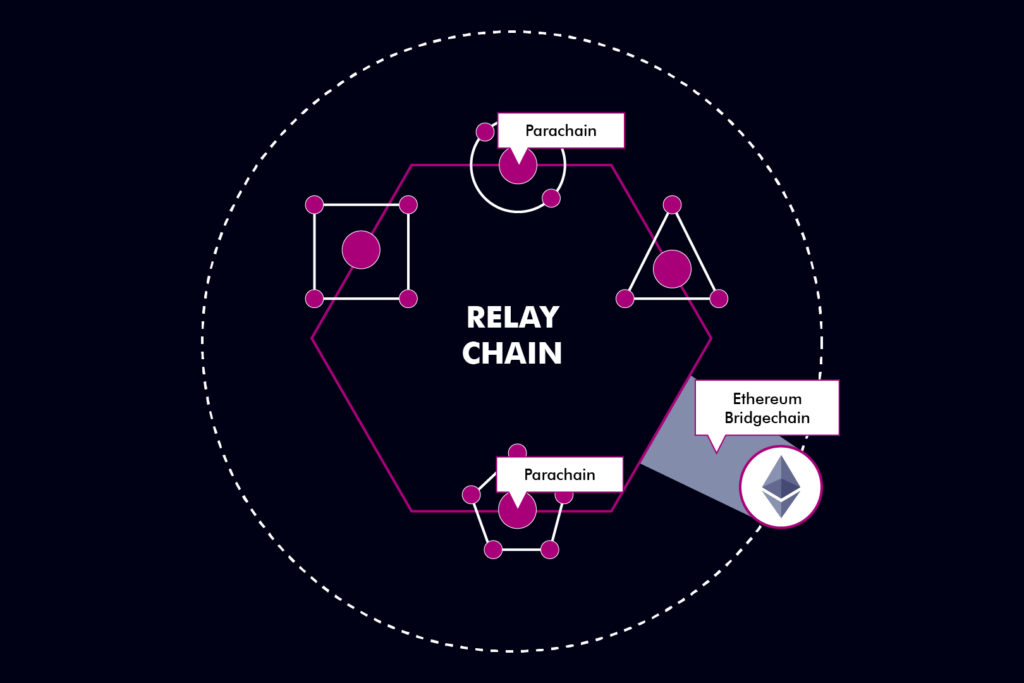
USE CASE OF POLKADOT
Polkadot is and will always be the primary network for the deployment of enterprise-level applications and those that entail high-value transactions requiring bank-level security and stability.
There are many different use cases for Polkadot parachains,including transaction chains, oracle chains, identity chains, file storage chains, data curation chains, IoT chains, finance chains, and privacy chains.
Over 25 projects are building on Polkadot, including Chainlink and Ocean Protocol.
POLKADOT WALLETS,EXCHANGES AND DEXES
Wallets
The integration of a wallet with Polkadot allows for simple and easy access to private keys and signing transactions. Below are some wallets that support Polkadot along with their development statuses.
1. Polkawallet
Polkawallet is a mobile wallet designed and made specifically for the Polkadot ecosystem including Substrate, Laminar, Kusama, Acala, and potentially other coins that run natively on Polkadot. Polkawallet provides cross-chain accessibility to your DOT tokens, and it also helps you manage your tokens while also participating in the staking and governance all done within the app.
Polkawallet is available as an iOS and Android app, there’s also an Android APK file for more technically savvy users. Polkawallet functionally is a hot wallet but it uses a unique offline cold signature model that combines easy access via the internet with network-isolated private keys that enables you to sign transactions offline with a QR code. The good part is that users retain full ownership of their private keys and never have to worry that your Polkadot tokens will be stolen as long as your private keys are not compromised.
Advantages of the Polkawallet includes:
One-glance view of asset information: DOT tokens can easily be viewed to access the information about it and know the amount that is transferable, locked, reserved and bonded on a single glance.
Seamless transfers & receipts: DOT tokens can easily be transferred to any other account on the network. You can send by simply entering the recipient address or scanning a QR code. Similarly, receiving DOT tokens is equally easy and you can check whether the tokens have been sent or received by viewing the real-time data on the chain.
Inbuilt social recovery: Losing access to your crypto wallet could be devastating since it is often impossible to recover lost coins. PolkaWallet has a remarkable social recovery system that enables you to use a social relationship account to restore lost wallets.
User-friendly staking: PolkaWallet has an intuitive design that makes it easy for users, validators and nominators to participate in the consensus process.
2. Polkadot.JS browser extension
Some investors however can decide not to store their DOT token in an app the Polkadot.js browser extension is a decent alternative.The Polkadot.js browser extension is an open source non-custodial wallet that helps you store and access information relating to your DOT tokens within a Chrome or Firefox browser interface. A major limitation of the Polkadot.js browser extension is that it doesn’t offer full wallet capabilities. You may not be able to nominate validators, participate in the staking process, or run complex commands.
3. Ledger Hardware Wallets
The Ledger wallet for storing DOT tokens is probably the most secure method for storing Polkadot because it helps you keep your tokens in cold storage.Beyond storing DOT tokens in mobile wallets and using browser extensions, the Ledger Wallet now supports DOT tokens for people who want the added layer of security that hardware wallets provide for storing cryptocurrencies.
The Ledger Nano X and the Ledger Nano S hardware devices now support the installation of the Polkadot app to manage DOT with the Polkadot web wallet. Ledger’s hardware devices are hardware wallets that lets you store your tokens and private keys in cold storage on a dedicated device that is not connected to the Internet.
The major selling point of storing DOT tokens on Ledger hardware wallets is the quality of security that it provides as a cold storage solution.
Exchanges
DOT coins can be bought from Coinbase or other cryptocurrency exchanges like Binance, Huobi,OKex, Kraken, and Bitfinex and others either by using a debit card or by exchanging for bitcoin or other cryptocurrency.
DEX
DEX on Ethereum has two main types: Orderbook and AMM, due to some technical limitations of Ethereum and on-chain liquidity is not so great, AMM is becoming the main DEX Model on Ethereum.
But with Polkadot, each Parachain is individually Custom to serve a number of specific functions, allowing combination of Models together, the problem of which Model is more widely used is not complete because the product is not Live, Below are some of the projects that stand out in the DEX segment
Zenlink Dex Network — AMM & Dex Aggregator (Parachain)
Zenlink Dex Network includes Module Zenlink DEX, Zenlink DEX Aggregator and other DEX Application on parachains.
The AMM formula applied in Zenlink DEX is X * Y = K.
By integrating the Zenlink DEX Module, Zenlink can enable parachains to quickly own DEX capabilities and share liquidity with other parachains, the final destination being Zenlink DEX Aggregator, where users are just one click away. The mouse is able to access the liquidity from the Parachains and choose the best price of that trading pair (similar to the Dex Aggregator on Ethereum).
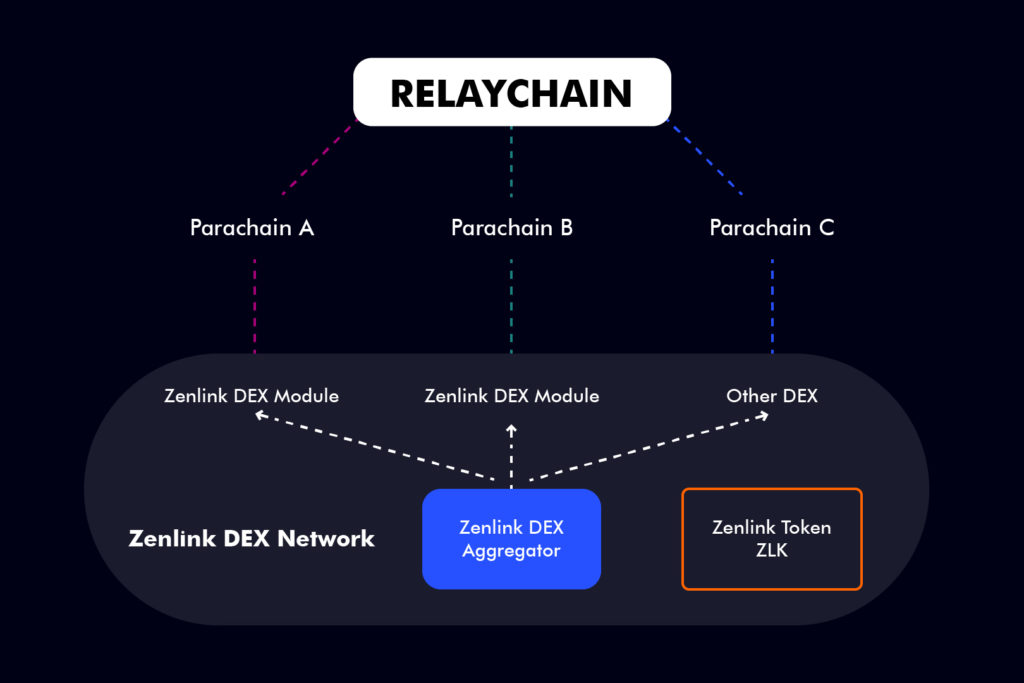
Manta Network — Private Swap (Parachain)
Manta Network is a set of zk-SNARK application protocols to provide end-to-end anonymity for users, built on top of Polkadot’s Substrate Framework.
Manta Network includes a set of products:
- Payment protocol.
- Lending protocol (future).
- Synthetic asset protocol (future).
- Decentralized exchange protocol.
Manta will solve the Private Swap problem by tokenizing the anonymous assets (Private Tokens) that are pegged to real assets at a ratio of 1: 1.
Private Tokens can then work in Defi, users can Swap Private Tokens through the Manta Network DEXs, furthermore applying them in Payment, Lending, Synthetic Assets.
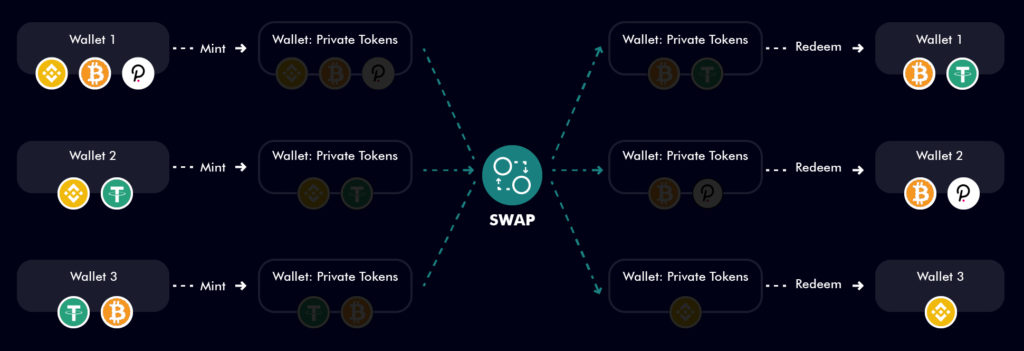
In addition, with the properties of Parachain Polkadot, Manta Network can interact with Chain and other Parachains. This is a big ambitious project on Polkadot.
Polkadot’s Role in DeFi Projects
The Decentralized Finance (DeFi) field relies on composability, cross-chain communication, value transfers, and protocols integrating with each other. It’s practically the entire rationale behind the Polkadot project. And as such many, DeFi projects utilize Polkadot.
For instance, the DeFi automation and aggregation-based Akropolis project relies on integrations with Maker, Compound, Curve and dYdX,. They have collaborated and contributed greatly to the Polkadot ecosystem.
Polkadot Pros
Scalability: The relay chain(multi-chain) of polkadot allows it to perform transactions from all chains in the network at the same time, drastically increasing scalability.
Innovation: Polkadot is a software that seeks to incentivise a global network of computers to operate a blockchain on top of which users can launch and operate their own blockchains.The ease of development enables more developers to take part in the system.
Improved Security:This relay chain provides a secure way for chains to communicate to each other. Polkadot coin allows chains to interact with each other meaningfully while remaining independent enough to run their unique governance models.
Promotes interoperability: By connecting all these different blockchains of other networks, Polkadot promotes unprecedented interoperability between these diverse ecosystems.
Removing forks: Forks can cause havoc and split up communities experiences in Bitcoin and Ethereum. Polkadot can integrate new features, fix bugs, and upgrade without needing to fork.It also solves congestion
POLKADOT CONS
- A limited number of parachains are available and slots are sold via auction, which may price out some smaller use cases.
- Polkadot is competing with many other general-purpose, smart contracting, Proof of Stake blockchains like Tezos, Cosmos, and Cardano , to name a few, with industry-leading Ethereum already showing entrenched network effects.
TOKENOMICS
DOT is the native utility token on the Polkadot network,It has several uses which includes payment of transaction fees and also voting on Polkadot.Polkadot is a Proof-of-Stake (PoS) chain which enables DOT holders to reap benefits given to miners in other platforms. The Relay Chain is at the root of Polkadot’s architecture and DOT holders are participants therein.DOT holders secure the ecosystem by staking as a validator node.Users may then trust a validator by nominating their DOT to them,becoming nominators and sharing in the reward
The first block of the project’s Relay Chain was launched in May 2020 and the Polkadot coin, DOT, was rolled out in a phased process.It is used for stacking, bonding and governance.
Polkadot raised about $140 million by selling its DOT token in a 2017 ICO.An estimate of $100 million was made by the company in two private sales in 2019 and 2020.
A bug in the Parity’s Ethereum wallet caused about half of the original ICO token to be frozen.These frozen tokens have not been recovered, however, the loss has not caused any inability of Polkadot to operate well.
Polkadot allowed investors to begin the trading of the remaining tokens starting from August 2020.It has then been listed on over 40 exchanges and it has been trading with a very high volume which has caused the coin’s market cap to skyrocket and become a top-five coin.
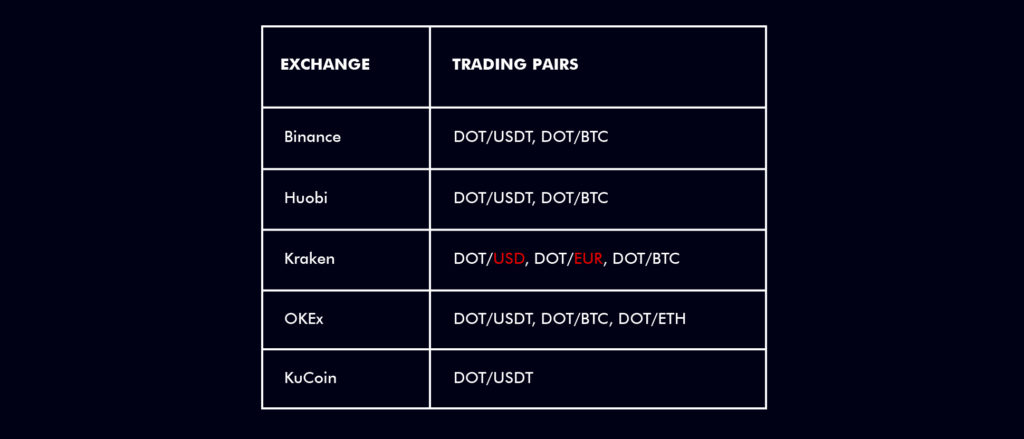
STAKING ON POLKADOT
The process of holding funds in a crypto wallet to support the operations of a blockchain network and in return holders get reward for their contribution is called Staking.
Polkadot aims to enable a new decentralized web by allowing blockchains of all kinds to securely interoperate.
Polkadot uses a Nominated Proof-of-Stake (NPoS) protocol to secure its network.DOT holders who want to stake their assets can do so as a validator which requires a node 24/7 or by nominating a validator. By doing so,they become a nominator. The link below shows how to stake DOT directly from a Ledger Hardware https://www.cada.news/safest-way-to-stake-dot-polkadot-ledger-hardware-wallet/
POLKADOT GOVERNANCE
DOT token holders control the direction of the network by proposing changes to the network and approve or reject major changes proposed by others.
These capabilities include changing the network fees, auctions, as well as the schedule for adding parachains (parallelized chains) that execute parallel to Polkadot’s Relay Chain. Furthermore, holders also have influence over upgrades, bug fixes, and other system maintenance.
Polkadot Bonding
This is the process of tying up DOT in order to add new parachains. It is an extension of the functionality of proof of stake.
NETWORK EFFECT
Polkadot network has raised approximately $200 million in funding from 11 investors and from the token sale. Recognized and notable organisations and investors in the Polkadot ecosystem are Kosmos capital, ZK capital, Pantera Capital,Fabric Ventures and Polychain Capital.
Some projects built with Polkadot and on Substrate include Polkaswap, Ren, Zenlink, Ontology, and more. Networks that are already running as Polkadot’s parachains include:Ocean protocol, Chainlink, Ox and plasma
POLKADOT WILD COUSIN,KUSAMA
Gavin Wood is also the creator of Kusama which is often referred to as Polkadot wild cousin. Kusama was released as an early version of Polkadot written using the same code which means they share the same underlying architecture, they also share key innovations like on-chain governance, hot-swappable runtimes for forkless, on-chain upgrades, and cross-chain message passing for interoperability. That is to say, Polkadot and Kusama share the vast majority of their underlying technology. However, they have their differences. Kusama adapts and evolves faster than Polkadot. It can perform faster upgrades (4 times than that of Polkadot). Token holders get 7 days to vote on referendums + Enactment period is 8 days on Kusama network while token holders on Polkadot get 28 days to vote.
